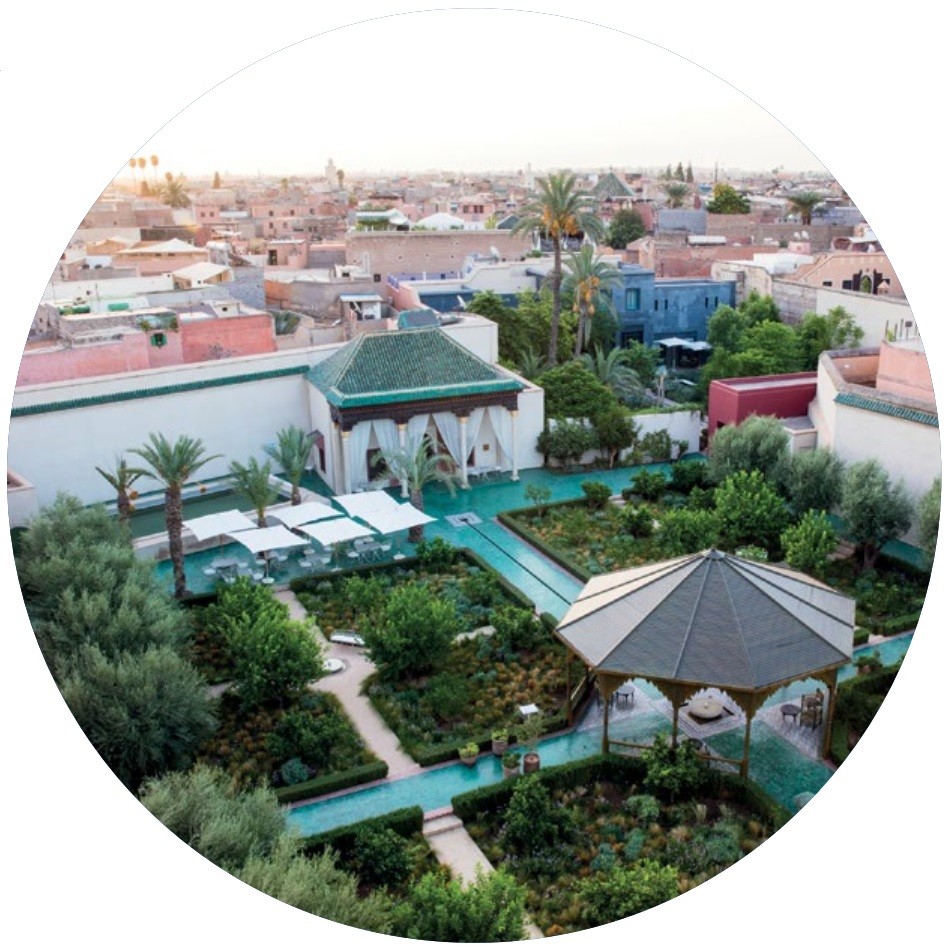Some of the most stunning gardens in the world, as seen through the lens of award-winning photographer Claire Takacs.


Just as impressionist painters cherished transient light on canvas with their bold brush strokes, Australian photographer Claire Takacs embraces the same feeling with her lens. She photographs some of the most stunning gardens around the world, capturing fleeting moments like the sun filtering through a canopy and mist rolling quietly through a valley.
In a time of closed borders and home quarantines, Takacs’ gardens are a soothing visual balm and a hopeful reminder of the visual wonders that await the traveller. “Many of the best are really works of art and the lifetime work of a passionate gardener. If they are not documented, these incredible, personal landscapes will be lost when the gardener moves on,” shares Takacs.
From the naturalistic wabi-sabi of kenroku-en in Ishikawa, Japan, to the manicured, geometric stylings of the traditional Islamic gardens of Marrakech’s Le Jardin Secret, every location and garden has its own distinct identity. each is not only the expression of its human planners and caretakers, but also a showcase of seasonal flora.
She opines that today’s gardens should be contextually relevant, with plant choices that suit the environment so they require little or no watering. “I’m seeing exceptional dry gardens around the world lately. Gardens shouldn’t use excessive resources to maintain them. there should be a balance between control and letting nature do its thing. Gardens have a lot of energy and vitality when they are healthy and plants are allowed to intermingle and freely grow or self seed to a degree. It’s a more relaxed and comfortable feel, and can even be achieved in very small spaces.”



01 Eastern Practice Kenroku-en in Ishikawa is considered to be one of the Three Great Gardens (Nihon Sanmeien) of Japan. This photograph by Takacs won first place at the inaugural International Garden Photographer of the Year Competition in 2008.
02 Fit For Royalty The Schloss Schwetzingen or Schwetzingen Palace in Germany is known for its expansive, ornate gardens that were designed in the second half of the 18th century.
03 Lookout Point Another favourite of Takacs is Windcliff Garden, located in Washington in the US. It sits on a cliff edge, overlooking Puget Sound towards Mount Rainier, an active volcano that towers over Seattle. Windcliff is also the subject of a book by Takacs and Dan Hinkley.

04 Seasonal Inspiration Located 580 metres above sea level, Cloudehill Garden in the Dandenong Ranges of Victoria, Australia, was the first garden Takacs ever photographed.

Hidden Treasures Built in the mid-19th century and restored in 2008, the beautiful Le Jardin Secret gardens lie in the heart of Morocco in Marrakech. The symmetrical geometric layout of the grounds facilitates irrigation.
While a lifelong love of nature drove Takacs to do a degree in environmental science, her travels prompted her to develop an obsession with capturing what she saw on her journeys. The first she ever photographed was Cloudehill Gardens in Australia. It was here that she realised the ever-changing nature of her subject. “I saw so much fleeting beauty and was very conscious that no one else was there to witness it. I wanted to document all of the ephemeral beauty I was seeing as the light passed through the garden that morning,” she recalls.
While the light changes with the time of the day, the contents of a garden can change with the seasons, or even day to day. Some of Takacs’ favourite spots, like Great Dixter and Gravetye Manor in the UK, are examples of such dynamism. “[Respective head gardeners] Fergus Garrett and tom Coward are some of the best in the world and their planting sees a huge succession of plants throughout the year. It is this change in the plants, the spontaneity of when a particular species has their moment of flowering, that is really special to capture.”
Fifteen years and a string of accolades and commendations later, Takacs is still doing what she loves most – experiencing verdant spaces intimately and documenting them. “Everything I have, I can carry in my backpack and spare hand. I don’t have an assistant. I prefer to experience gardens alone.”
While the lockdown has put a damper on Takacs’ travel plans, she’s been keeping busy with webinars and workshops. Keep up to date with her calendar at takacsphoto.com. She is also releasing a photo and essay book, Windcliff, with Dan Hinkley, one of the world’s leading plant collectors.
Tools Of The Trade
The equipment Claire Takacs uses to capture her beautiful images.
Takacs shoots with a Canon 5DSR using a Wide Angle 1635mm, Telephoto 70-200mm and a standard lens. A macro 100 is used for close-ups. All shots are taken from a Gitzo carbon fibre tripod so she can shoot sharp images in low light. It also allows her to take two exposures – one for the sky and one for the subject – if needed. She also uses a DJI Mavic Pro Drone, which is “very much like another lens”, UV filters, a reflector to block lens flares, and a ladder.
Text Weets Goh























